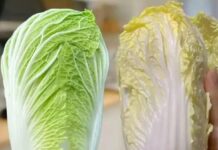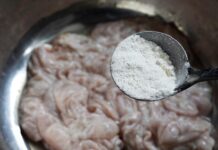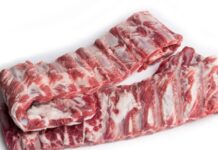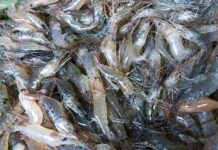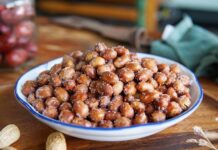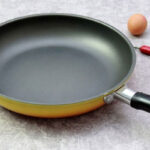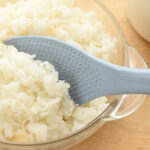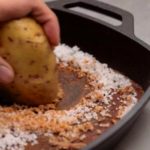In Vietnamese households, it is common to find rice paddles with small bumpy dots. These dots serve a specific purpose beyond just being a design element.
The Unexpected Purpose of the Bumpy Dots on Rice Paddles
At first glance, one might assume that the bumpy dots on rice paddles are meant to prevent rice from sticking to the paddle. However, smooth paddles are actually more effective for this purpose. Interestingly, you will still find that rice sticks to the bumpy paddle.
Removing Stuck-on Rice from the Pot: One of the main challenges when cooking rice is dealing with the rice that inevitably sticks to the pot. If not removed carefully, it can damage the non-stick coating. This is where the bumpy dots on the rice paddle come into play. They provide a rough surface without being sharp, allowing you to scrape off the rice from the pot without scratching the non-stick coating. Instead of soaking the pot, which can damage the coating, you can use the bumpy paddle to conveniently remove the stuck-on rice.
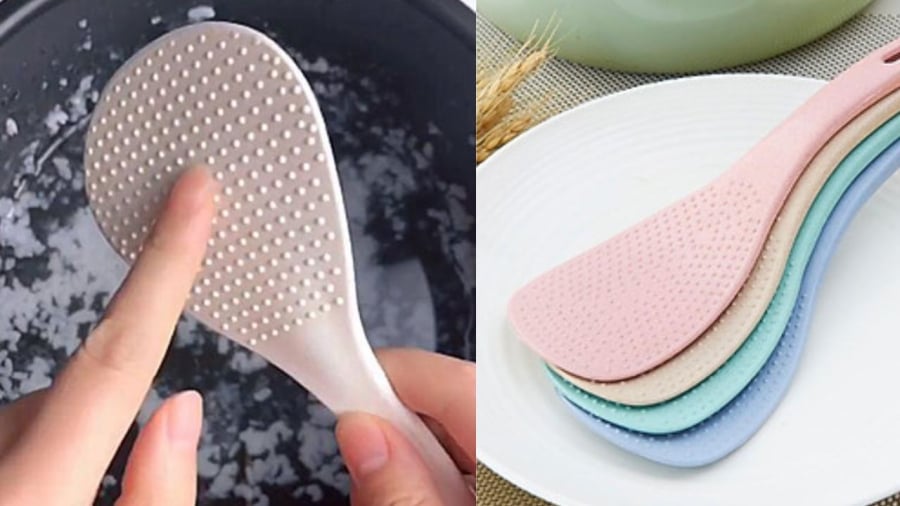
The Unsung Hero: Bumpy Dots
Alternatively, you can add a bit of water to the pot to soften the rice, making it easier to push down with the rough side of the paddle. This method is quicker and less likely to damage the pot compared to soaking it.
The bumpy dots provide just the right amount of texture to effectively remove stuck-on rice without the sharpness that could damage the non-stick coating.
Important Considerations When Using a Non-Stick Rice Pot
To maintain the integrity of the non-stick coating, it’s crucial to avoid using sharp objects, including sharp-edged paddles, when removing rice from the pot. Additionally, never use a metal scourer to clean the pot as it can scratch the coating.
When the non-stick coating starts to peel, it not only affects the pot’s performance but also poses potential health risks. Therefore, it’s essential to take care of your rice pot and follow these additional tips to prolong the life of the coating:
Always transfer leftover rice to a bowl instead of storing it in the pot, as prolonged exposure to cooked rice can damage the coating. Additionally, avoid keeping rice in the pot for too long, as it’s not ideal for your health or the pot’s coating.
After washing your rice pot, dry it by placing it upside down; this will help maintain the coating’s effectiveness.
Do not soak your non-stick rice pot for extended periods, as it can reduce the coating’s lifespan and lead to premature deterioration.
Never use the inner pot directly on the stove, and avoid using it for rice washing, as the friction can damage the coating.
Never submerge a hot inner pot in cold water, as the sudden change in temperature can damage the coating.
Discontinue using the inner pot of a rice cooker once the non-stick coating starts to peel.
The Secret Power of the Dots on Your Rice Spoon Revealed
“You may have noticed the tiny dots on your rice spoon and wondered about their purpose. These aren’t just decorative; there’s a practical reason behind this design, and we’re here to reveal all. Read on to discover the fascinating story behind these little dots and how they elevate your dining experience.”
“The Ultimate Guide to Using Non-Stick Pans: Cooking Safely and Healthily”
Non-stick pans are a popular kitchen staple, but many people are unaware of how to use and care for them properly. This guide will teach you everything you need to know about getting the most out of your non-stick pan, from choosing the right one to maintaining its durability and ensuring your food always turns out perfectly. Learn the do’s and don’ts of non-stick pan care and become a master in the kitchen!











